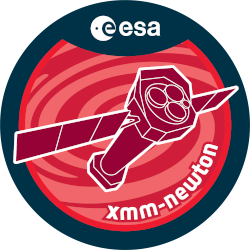

| Proposal ID | 067392 |
| Title | Tracking spectral variability with luminosity in the ultraluminous state |
| Download Data Associated to the proposal | https://nxsa.esac.esa.int/nxsa-sl/servlet/data-action-aio?obsno=0673920201 |
| DOI | https://doi.org/10.5270/esa-bt9v4qe |
| Principal Investigator, PI | Mr Andrew D. Sutton |
| Abstract | A substantial body of evidence suggests that most ultraluminous X-ray sources(ULXs) are stellar remnant black holes accreting at super-Eddington rates, in anew ultraluminous accretion state. Little is known of the astrophysics of thisputative state to date. Gladstone et al. (2009) propose a sequence of threespectral regimes that ULXs may progress through as their accretion rateincreases; but no evidence for this progression from an individual source hasyet been seen. Here, we propose three observations of a highly variable ULX inNGC 5907, triggered at different flux levels by Swift monitoring data. Thesewill investigate whether large amplitude luminosity variation in a ULX isaccompanied by transitions through these ultraluminous state regimes. |
| Publications |
|
| Instrument | EMOS1, EMOS2, EPN, OM, RGS1, RGS2 |
| Temporal Coverage | 2012-02-05T11:51:32Z/2012-02-09T18:52:10Z |
| Version | 17.56_20190403_1200 |
| Mission Description | The European Space Agencys (ESA) X-ray Multi-Mirror Mission (XMM-Newton) was launched by an Ariane 504 on December 10th 1999. XMM-Newton is ESAs second cornerstone of the Horizon 2000 Science Programme. It carries 3 high throughput X-ray telescopes with an unprecedented effective area, and an optical monitor, the first flown on a X-ray observatory. The large collecting area and ability to make long uninterrupted exposures provide highly sensitive observations. Since Earths atmosphere blocks out all X-rays, only a telescope in space can detect and study celestial X-ray sources. The XMM-Newton mission is helping scientists to solve a number of cosmic mysteries, ranging from the enigmatic black holes to the origins of the Universe itself. Observing time on XMM-Newton is being made available to the scientific community, applying for observational periods on a competitive basis. |
| Creator Contact | https://www.cosmos.esa.int/web/xmm-newton/xmm-newton-helpdesk |
| Date Published | 2013-03-02T00:00:00Z |
| Last Update | 2025-08-04 |
| Keywords | "flux levels", "accretion rate increases", "amplitude luminosity variation", "NGC 5907", "substantial body", "spectral regimes", "variable ulx", "tracking spectral variability", "super eddington rates", "individual source", "ngc 5907" |
| Publisher And Registrant | European Space Agency |
| Credit Guidelines | European Space Agency, Mr Andrew D. Sutton, 2013, 'Tracking spectral variability with luminosity in the ultraluminous state', 17.56_20190403_1200, European Space Agency, https://doi.org/10.5270/esa-bt9v4qe |